There can be your advertisement
300x150
Kitchen Scenes in Soviet Cinema: What They Revealed About Real Life
Looking at kitchens from that era, one can glimpse an entire epoch and lifestyle
"Lyudk a Lyudk!" - and suddenly the whole country knows what a real rural kitchen looks like. "Move away from the kitchen, the cook is working here!" - and we see a factory cafeteria through the eyes of the main character. In Soviet cinema, the kitchen was not just a setting but also a social indicator, a mirror of the era and a characteristic of characters.
From the luxurious kitchen of Professor Tikhomirov to the modest Kuzyakins' kitchen - each stove told viewers a whole story. About wealth and poverty, about family happiness and loneliness, about how the "ordinary Soviet person" lived.
Main points of the article:
- The kitchen was the main family space - here the most important conversations and reconciliations took place;
- The "Saratov" or "ZIL" refrigerator instantly spoke of family status - it was the dream of millions;
- Rural kitchens with Russian ovens were contrasted to urban ones with gas stoves - a symbol of progress;
- The most dramatic scenes happened precisely on the kitchen stove - from family quarrels to love confessions;
- Kitchen utensils worked as props: enameled pots = simplicity, crystal = wealth.
"Lyudk a Lyudk!": The Kitchen as the Heart of the Home
In "Love and Pigeons," the most poignant scenes happen right on the kitchen stove. Here, Nadya cooks for her family; here occurs the famous meeting between two rivals - Raisa Zakharovna and the homeowner. "Lyudmila Gurchenko sitting on the refrigerator" became a meme long before the internet.
The rural kitchen of the Kuzyakins is an encyclopedia of 1980s Soviet life. A simple gas stove, enameled pots, a floral tablecloth. No extravagance, but everything functional and cozy. On the table - a samovar, indicating that the family preserves traditions.
Interestingly, interiors "inside the house" were filmed on studio sets, but director Vladimir Menshov achieved stunning authenticity. Every detail - from the placement of pots to wall color - was meticulously checked.
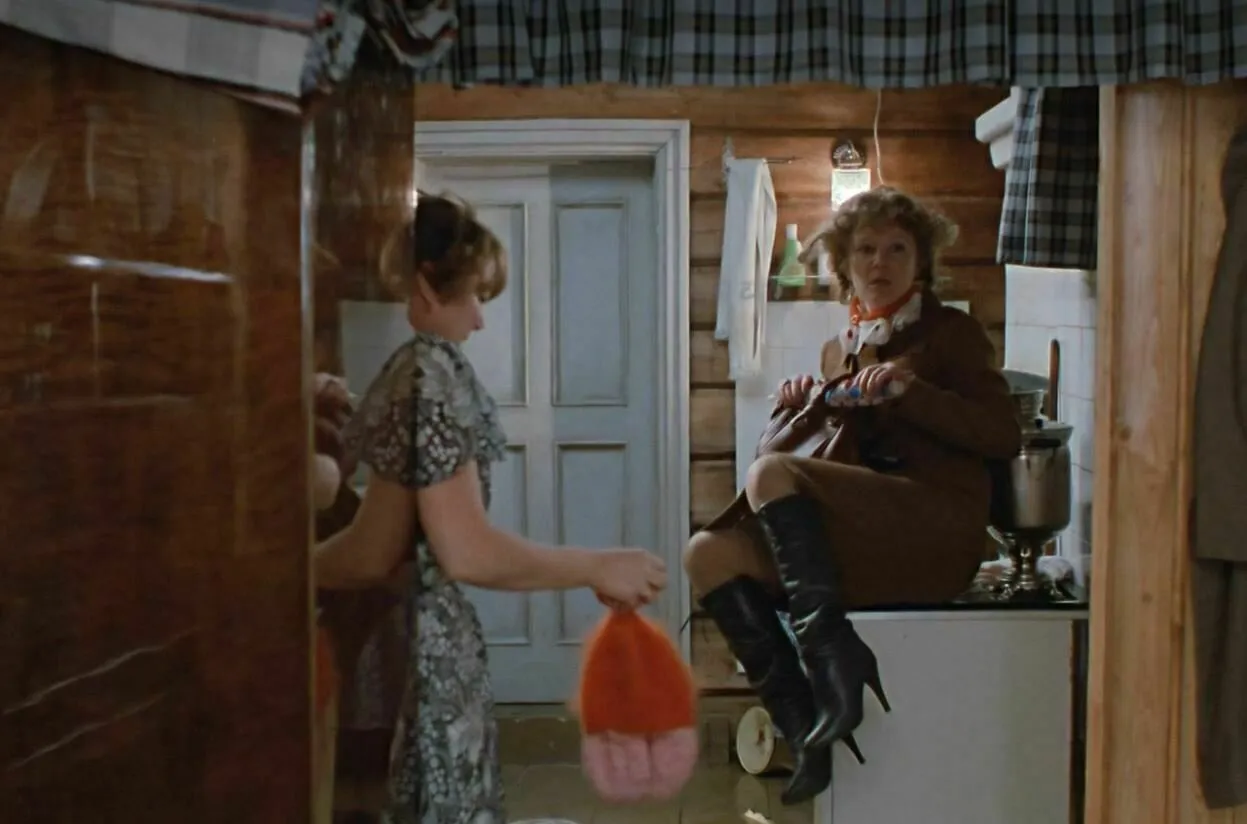
"Move away from the kitchen!": Cafeterias as a Mirror of Society
In "Girls," the legendary cafeteria scene became the film's calling card. "Move away from the kitchen, the cook is working here!" - and we see a huge factory cafeteria with long tables and simple dishes.
Public dining in Soviet cinema was always contrasted to home kitchens. The cafeteria represents work, officialdom, and collectivity. Home cooking is family, warmth, sincerity. Directors skillfully used this contrast.
In "The Athonite," the hero Leonid Kuraev constantly snacks in pubs and cafeterias - a sign that he has no real home. In contrast, family characters are always shown at the dinner table.
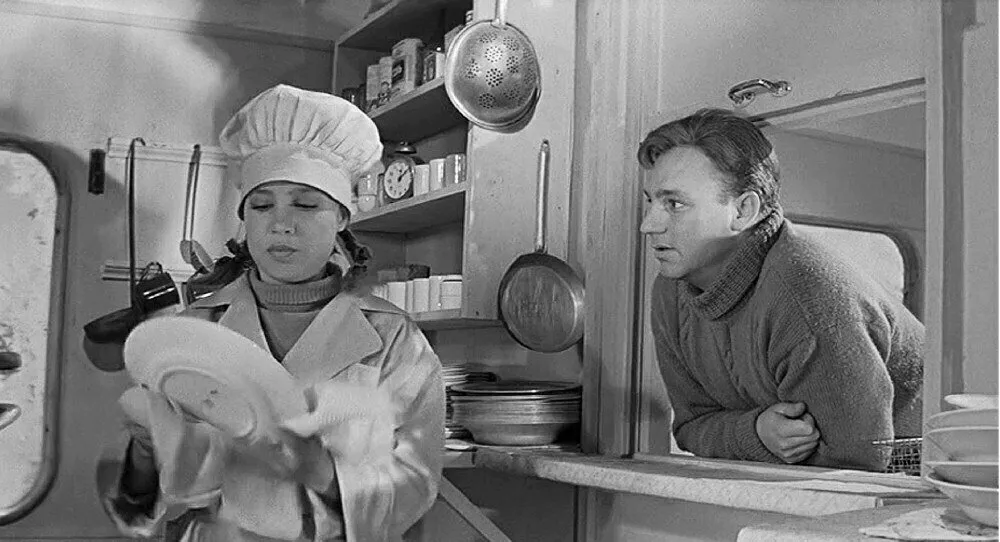
Photo: pinterest.com
The Refrigerator as a Symbol of Wealth
In Soviet cinema, the refrigerator was not just household appliance but also a status symbol. "Saratov," "ZIL," "Biryusa" - by the brand, viewers instantly understood a family's material status.
In "Irony of Fate," the characters have identical refrigerators - emphasizing the film's theme about uniformity in Soviet life. In "Moscow Does Not Believe in Tears," Professor Tikhomirov's apartment has an imported refrigerator, a sign of high social standing.
Remember the famous scene from "Love and Pigeons" where Raisa Zakharovna sits on the refrigerator? It wasn't accidental - she literally "seized" the main symbol of family well-being.

Photo: pinterest.com
Gas vs. Wood: Progress in One Stove
The contrast between the rural oven and urban gas stove was a classic technique in Soviet cinema. The oven represents traditions, connection to the land, patriarchal norms. A gas stove symbolizes progress, modernity, urban civilization.
In "Red Pines," Egor Prokudin returns to his village to see his mother - and the first shots show the Russian stove. This immediately tells us: the hero returns to his roots, to real life.
In contrast, in "Office Romance," all kitchens are strictly urban with gas stoves. This is the world of bureaucrats and employees, where there's no place for rural romance.
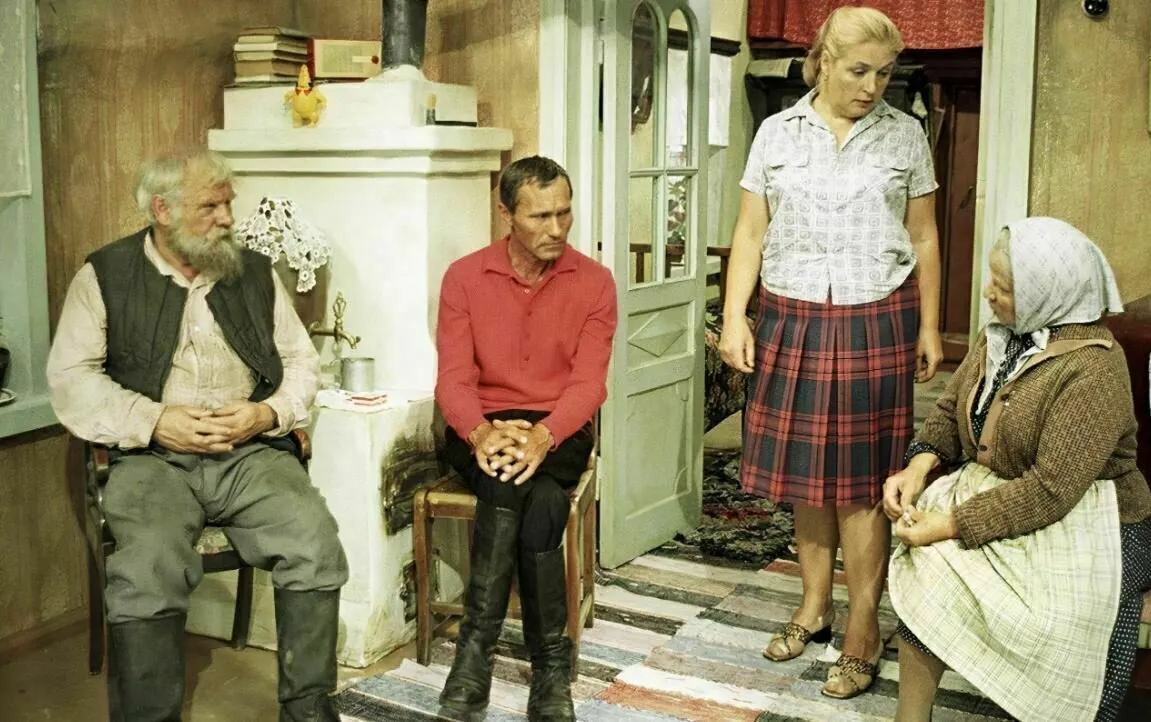
Photo: pinterest.com
Cookware as a Character Trait
Kitchen utensils in Soviet cinema served as precise character traits. Enamel pots and simple plates were signs of humble, honest people. Crystal glasses and porcelain sets were symbols of wealth or claims to it.
In "The Diamond Arm," Gorbunov has ordinary Soviet dishware. In the restaurant, smugglers have crystal and silver. The contrast is clear: honesty versus greed.
Directors had a special fondness for samovars. They symbolized family warmth, hospitality, and Russian traditions. A samovar on the table automatically made a family "good," respectable.
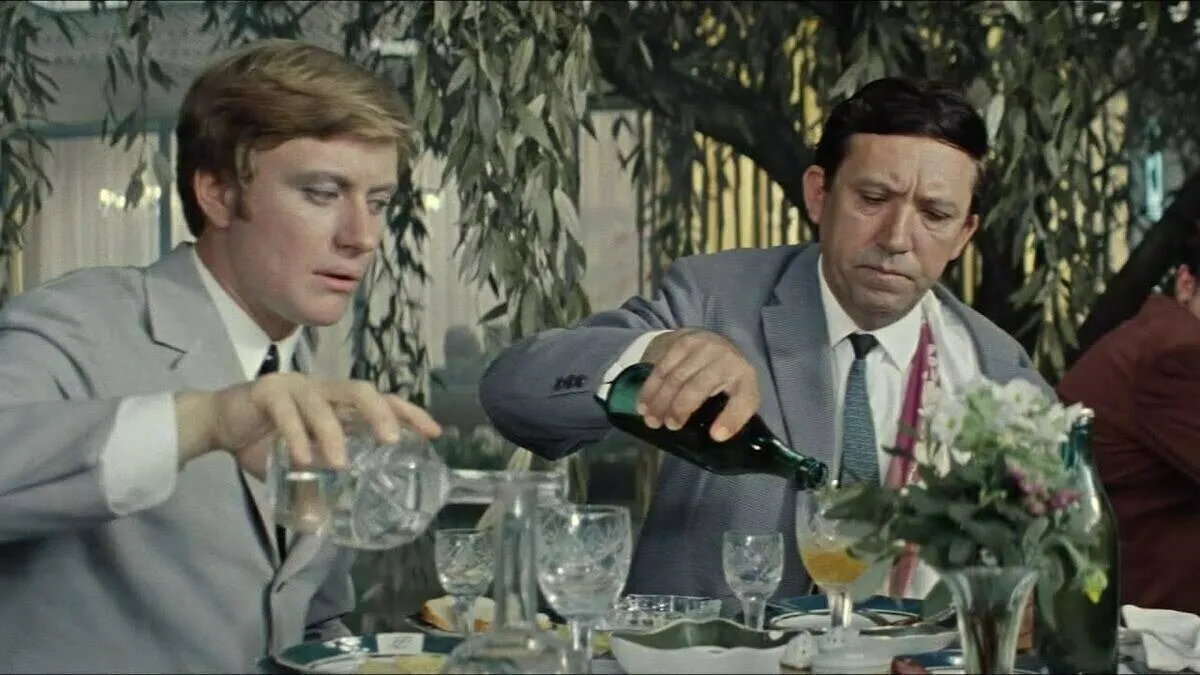
Photo: pinterest.com
Familial Dramas at the Kitchen Table
The most important conversations in Soviet cinema happened precisely on the kitchen stove. Here, love was explained, reconciliations occurred after quarrels, and important decisions were made. The kitchen was a space of sincerity - where masks came off and true feelings showed.
In "Moscow Does Not Believe in Tears," Katya confesses her plans to friends right on the kitchen stove. In "Love and Pigeons," all family dramas unfold around the kitchen table. In "The Athonite," the hero seeks warmth and understanding - and finds it also at the kitchen stove.
Directors understood: the kitchen is the most informal space in a home. Here, people become themselves.
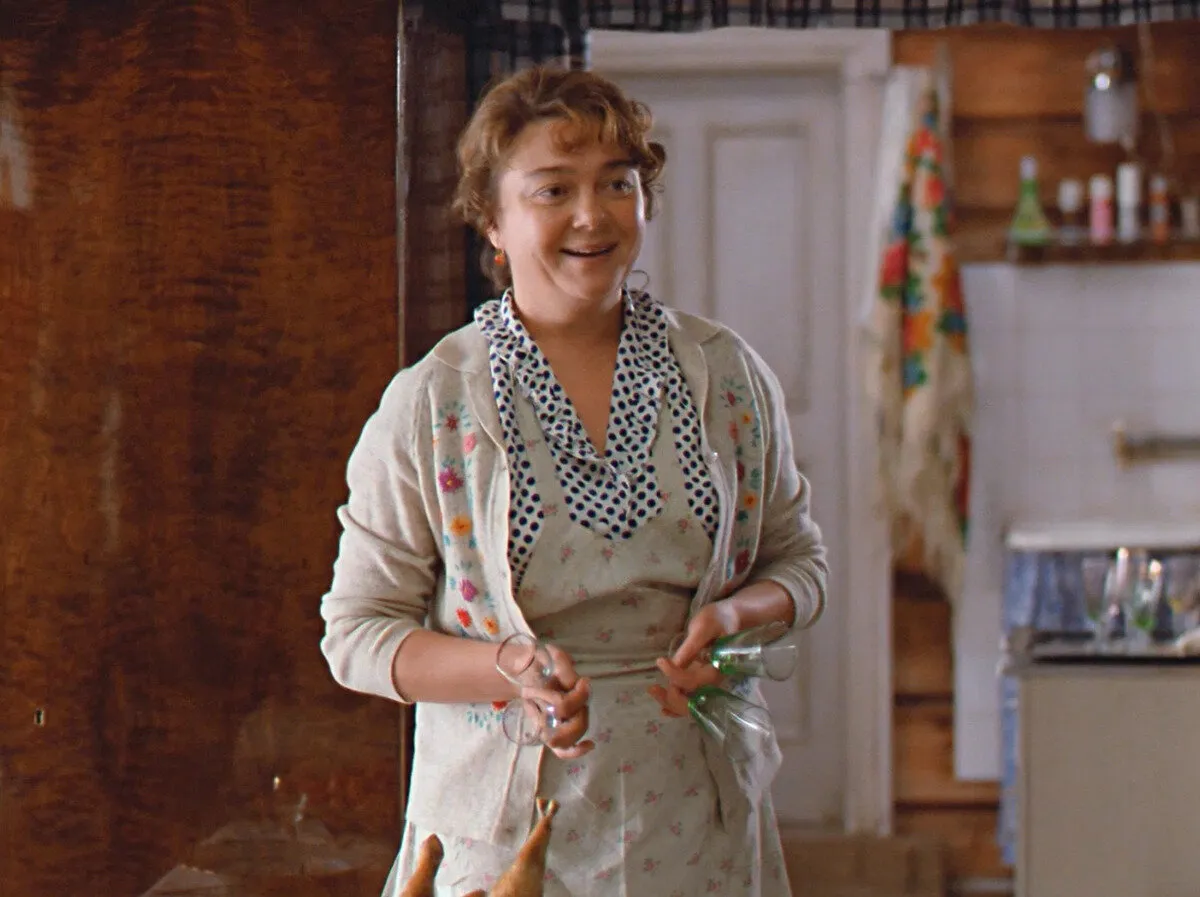
Food as a Language of Emotions
What the characters cooked and how they ate were part of their characterization. Borscht and cutlets - a traditional family. Delicacies and foreign products - claims to distinction. Simple porridge - modesty and simplicity.
In "Irony of Fate," the famous fried fish became a symbol of an incompatible couple. In "Love and Pigeons," Nadya prepares simple, hearty food - a sign of care for her family.
Interestingly, in Soviet cinema almost nobody cooked elaborate dishes at home. Complex cooking was a privilege of restaurants and special occasions.
The Kitchen as a Social Elevator
One could trace the social rise of characters through their kitchens. In "Moscow Does Not Believe in Tears," Katya's journey from a simple girl to factory director is shown partly through kitchen changes - from communal to elite.
The size of the kitchen, quality of furniture, presence of appliances - all worked as indicators of success. A spacious kitchen with imported appliances meant the character "succeeded in life." A cramped kitchen with minimal conveniences suggested a long road ahead.
Soviet kitchens in cinema are not just decorations. They are portraits of an era, encyclopedias of everyday life, sociology textbooks. Every pot and every tablecloth told viewers more than pages of text about how people lived in the USSR.
More articles:
 5 Stylish Micro Entryways with Cool Ideas for Renovation
5 Stylish Micro Entryways with Cool Ideas for Renovation Urban Garden All Year Round: How to Grow Vegetables and Herbs on a Balcony
Urban Garden All Year Round: How to Grow Vegetables and Herbs on a Balcony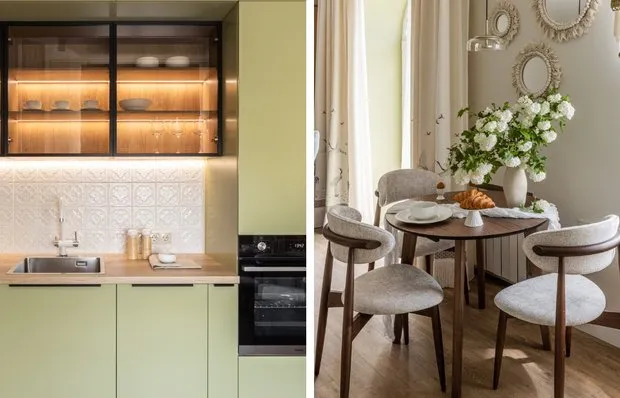 Light of Southern Sun: How They Designed the Kitchen in a Stalin-era Apartment in Ufa
Light of Southern Sun: How They Designed the Kitchen in a Stalin-era Apartment in Ufa Minimalist and Light: How They Designed a Stylish Entrance in a Stalin-era Apartment
Minimalist and Light: How They Designed a Stylish Entrance in a Stalin-era Apartment 8 Ideas We Spotted in the Transformed Stalin-era Apartment from 1953
8 Ideas We Spotted in the Transformed Stalin-era Apartment from 1953 Sunshine Accent: How They Dared to Style a Bright Kitchen in Trash
Sunshine Accent: How They Dared to Style a Bright Kitchen in Trash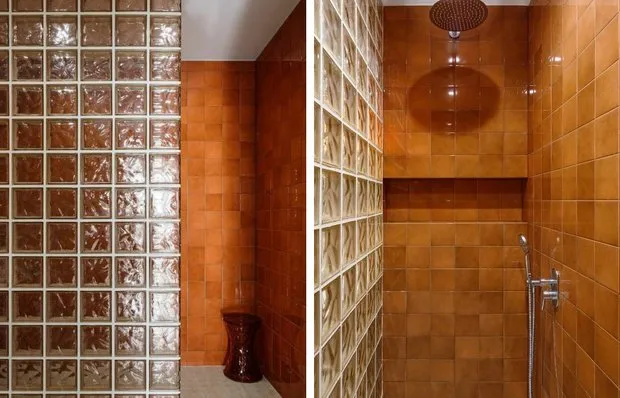 Bathroom 6.9 sq.m: How Glass Blocks and Colors Created a Wow Effect
Bathroom 6.9 sq.m: How Glass Blocks and Colors Created a Wow Effect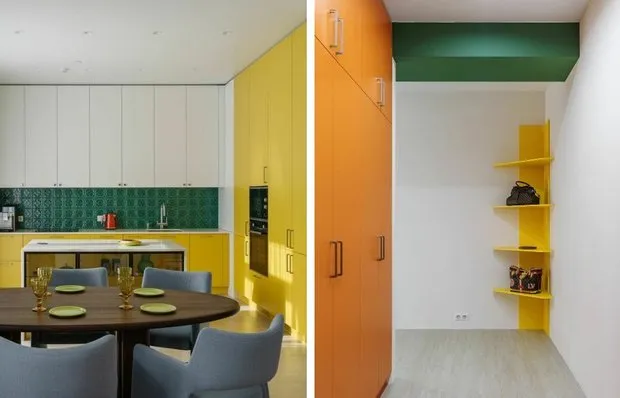 Top-6 Storage Secrets We Spotted in a Bright Trash
Top-6 Storage Secrets We Spotted in a Bright Trash